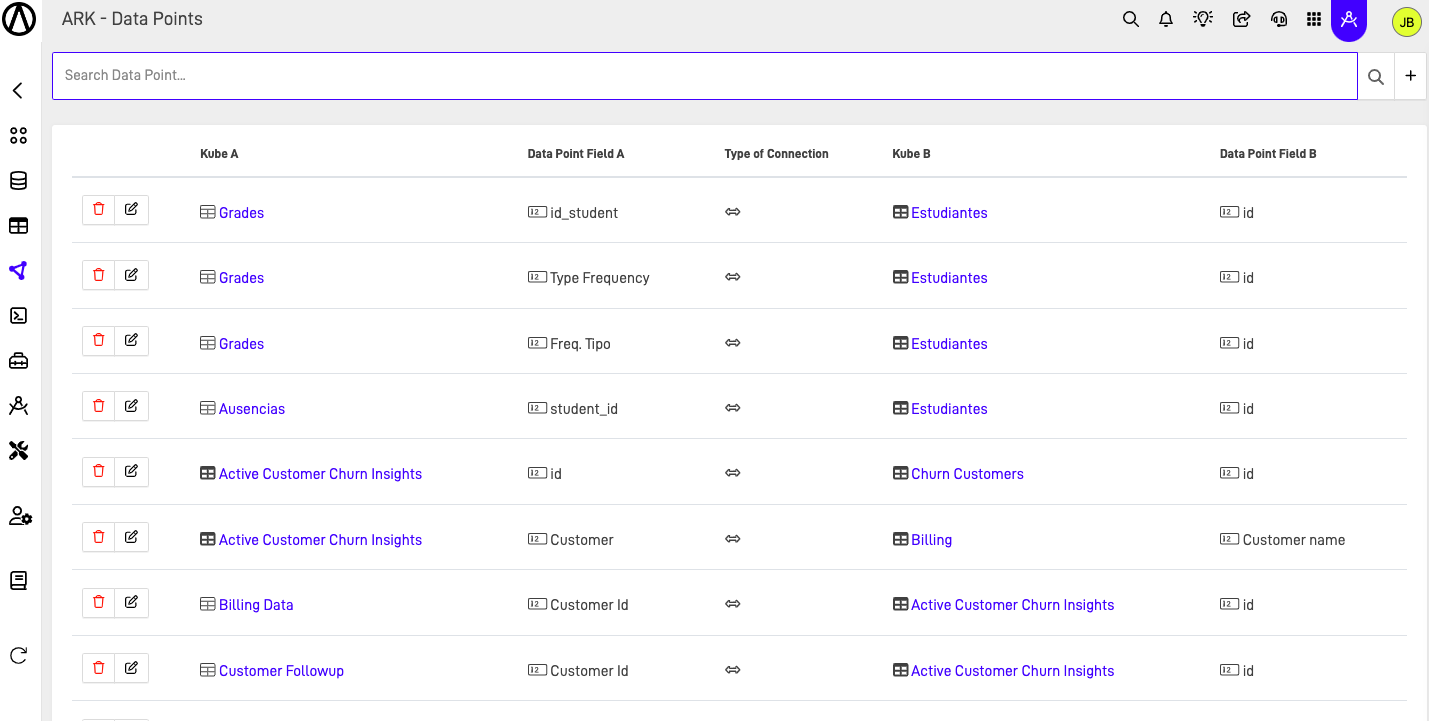Data Points
🔗 Data Point Overview
Data Points are relational connections between a field in one Kube and another field in a different Kube. This relationship allows for the search and visualization of all mapped data between the two Kubes, making data analysis more integrated.

🌟 Key Functions of Data Points
-
Relational Connections
Data Points establish connections between fields in different Kubes, helping ARPIA create a comprehensive and holistic view of all available data. -
Data Correlation
By identifying relationships between different data models, ARPIA is able to access and manage interconnected data more effectively, improving analysis. -
Artificial Intelligence Integration
Data Points enhance the capabilities of DataAI by enabling ARPIA to extract insights and generate value from interconnected data using AI-driven analytics.
📊 Visualization and Dashboards
Data Points play a crucial role in building Dashboards:
- When creating a filter using one of the Kubes where a Data Point exists, you can apply this filter across the entire dashboard.
- If the dashboard contains both Kubes connected by the Data Point, the filter will automatically apply to data from both Kubes, ensuring a unified view of the data.
By leveraging Data Points, ARPIA enhances data interconnectivity, allowing for more effective data visualization, filtering, and AI-driven analysis across Kubes.
Updated about 1 year ago
